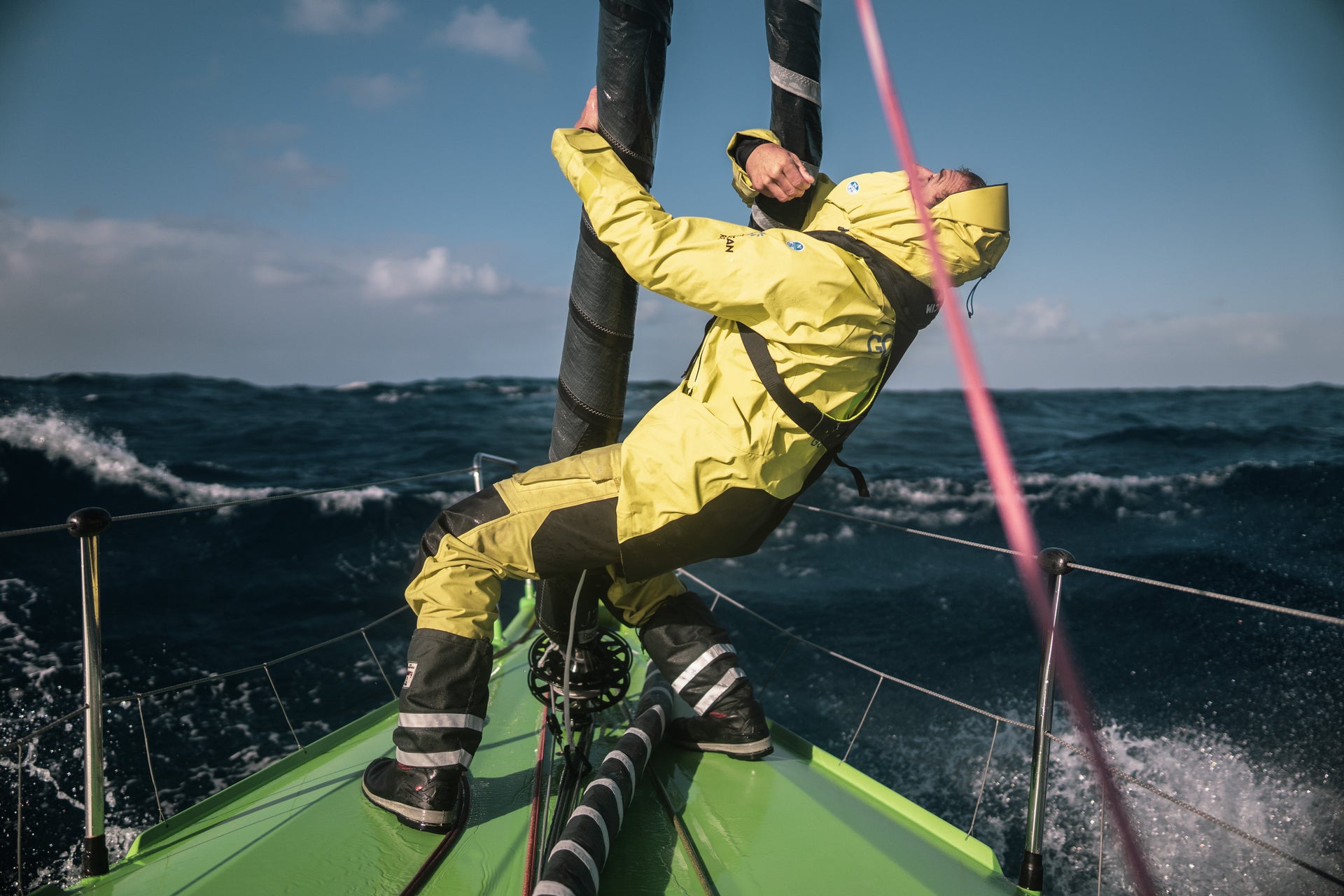HEAVY WEATHER SAILING BASICS
Be Aware And Stay In Control
First of all, heavy weather is not an absolute wind strength. It’s whenever the wind and waves are such that you risk losing control of your boat. This may happen to a novice crew in a small boat in a moderate wind of only 12 knots. An experienced crew in a big cruiser may not have control problems until they’re in a 35 knot gale.
Your course and speed are factors. In a moderate 12 knot true wind, a boat sailing close-hauled at a speed of 7 knots is really in a fresh wind of about 17 knots.
The Beaufort Scale is an especially helpful way to describe weather because it shows both wind and waves on a scale of 13 “forces,” from calm to hurricane. This scale reflects the fact that the wind’s power increases exponentially. A 22 knot wind is as much as four times more powerful than an 11 knot wind. And big, breaking, or irregular waves are tough to sail in.

For the coastal cruiser, the ability to sail comfortably and safely in a good blow is essential. Otherwise you will live in constant fear of strong wind, which will probably take away some of the joy of cruising. Squalls are a reality of coastal cruising, particularly in the heat of the summer. Though often short-lived, their impact can be devastating.
While true storm sailing is a rarity for coastal cruisers, it behooves us to prepare for that eventuality.
HEAVY WEATHER AWARENESS
While a big storm rarely arrives unannounced, heavy weather and squalls can sneak up on you if you’re not alert — especially on a run, when you and your crew may be distracted by the thrills of sailing fast, the seas are following, and the apparent wind is relatively light.

Be alert to the rise and fall of the barometer, changing cloud formations, radio forecasts, and changes in the wind, waves, and air temperature or humidity.
If a squall or hard blow seems imminent:
-
Plot your position using every means at your disposal, and note the sea room and safe harbors in every quadrant.
-
Put on foul weather gear and safety harnesses. You can always take them off if the weather calms.
-
Big wind and waves are noisy. Establish hand signals for communicating. For example, fingers up means hoist or trim slowly; thumb up means hoist away, or full trim. Likewise, fingers down for ease, and thumb down for release. A fist means hold or stop.
-
Close hatches and other deck openings to keep water from coming below.
-
Secure loose gear on deck and below. Rig lee cloths below. Clear excess gear to reduce windage on deck and in the rigging.
-
Be prepared to shorten sail quickly.
-
Put your best driver at the helm, particularly for the initial blast of a squall. Steering is demanding in rough weather and not only takes strength but agility.
-
Make sure flashlights, tools, and spare gear are ready.



























